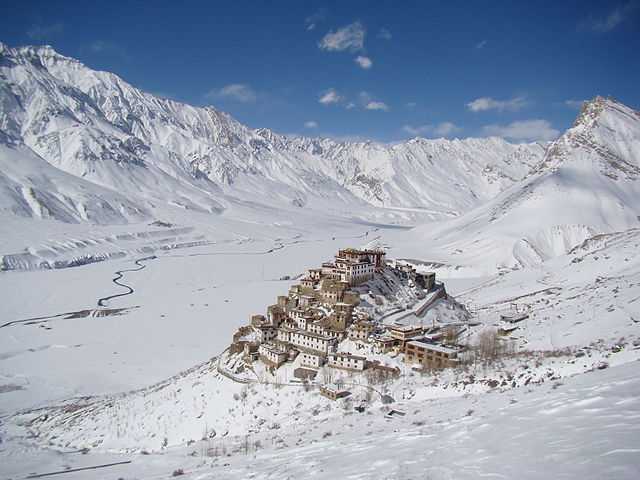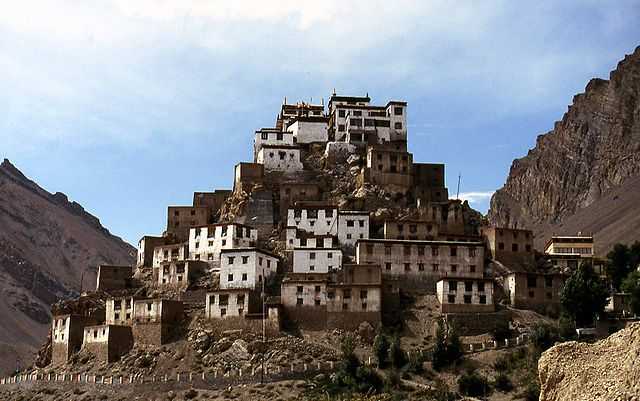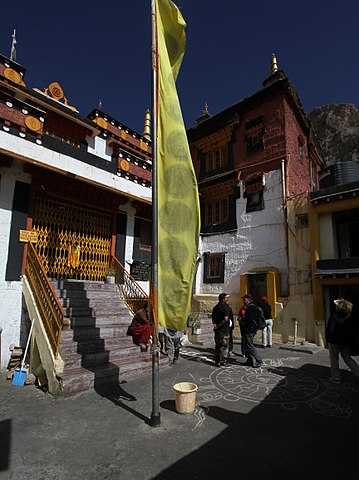Key Monastery
₹ 162 onwards
View Spiti Valley PackagesWeather :
Label : Top Attraction
Tags : Buddhist Temple
Time Required : 1-2 hrs
Entry Fee : No entry fee
Best Time to Visit : June and October
Kee Gompa (Monastery), Kye monastery,
Key Monastery, Spiti Valley Overview
The Key Monastery is a famous Tibetan Buddhist monastery in the Lahaul and Spiti District of India. Located at an altitude of 4,166 metres above sea level, the monastery is very close to the Spiti River in the Spiti Valley of Himachal Pradesh in India. Also known as the Kye Monastery and Ki Monastery, it is believed to have been founded by Dromton, who was a student of the famous teacher Atisha in the 11th century. It enshrines Buddha idols in the Dhyana position and has a collection of ancient books and murals.
The stunning Key Monastery is over a thousand years old and is also the largest monastery to be found in the entire Spiti Valley. The magnificent monastery doubles up as a religious training centre for the Lamas, and about 300 lamas receive their education from here. It has a long and fascinating history attached to it: a long history that involves numerous attacks that the place had to face. Nevertheless, Kye Monastery survived and celebrated the completion of its thousand years in the year 2000 in the presence of the Dalai Lama.
Must Know Before You Visit Key Monastery
Note : 1. Driving from Manali to Kaza can be quite risky, so avoid the self-drive at all costs. It is recommended to ride in a bus to reach your destination.
2. There are only one or two ATMs in Kaza, which might run out of money. Therefore, make sure that you carry enough cash.
3. If informed well in advance, the monastery provides accommodation options. This is a good way of experiencing the serene life of the monks and interacting with them. The charges are INR 250 per night including food.
4. The monks at the monastery are really friendly and helpful. Thus, don't hesitate in talking to them and learning more about the place.
5. Do try the herbal tea available here. It's very refreshing and good for oxygen circulation in the body.
Key Monastery Highlights
1. Cham Festival

Read More on Key Monastery
History and Significance of Ki Monastery
In 1841, the monastery was severely damaged by the Dogra army under the rule of Ghulam Khan and Rahim Khan. In the same year, it was destroyed due to the attacks of a Sikh regiment. Disaster struck the monastery yet again when the structure was damaged by a fire in the 1840s, and further damage was caused in 1975 when a massive earthquake occurred. The Archaeological Survey of India and the State Public Works Department then worked to repair and restore this historic structure.

Source
Architecture of Key Monastery
The walls of the Key Monastery are adorned with beautiful murals and paintings. The temples in the compound are all built on top of one another, and the building is marked by narrow corridors that lead to low rooms. The monastery has three floors in all. The first floor, which is used for storage, is mostly underground. The ground floor of the monastery houses the Assembly Hall which is beautifully decorated and also has cells that have been constructed especially for the monks.

Source
One particular room that never fails to capture the attention of the visitors is known as Tangyur, which is a room that is richly painted with murals. The Fourteenth Dalai Lama inaugurated a new Prayer Hall on 3 August in 2000 in the Key Monastery. This prayer hall was also presented in the 69th Republic Day celebrations at New Delhi through a tableau.
Collections at Kye Monastery
Other than these, the monastery also houses numerals books and murals, including the images of Buddha. Numerous prayer rooms, which can be reached by travelling through difficult and dimly lit passages, and then entering through small doors, can also be discovered here. All of these rooms, however, do not adhere to a single design or style. While at the monastery, do not forget to step back and have a look at the Lamas, who can be seen dancing merrily, singing and playing on their pipes and horns.

Source
How To Reach Key Monastery
The cars are not allowed beyond a point. Reaching the monastery involves a steep climb from the car parking which is not suitable for elderly people and small kids.
Top Hotel Collections
Top Hotels Near Key Monastery
Key Monastery Reviews

Have a Question on Key Monastery?

experience.